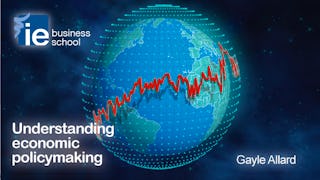This four-week, four-module course explores selective aspects of the Australian economy, with emphasis on macroeconomic and financial policies. The course introduces participants to several key attributes of the Australian economy and discusses how they are influenced by both domestic and international forces. We will examine some of the key issues and dilemmas facing the Australian economy and how policymakers can deal with them using monetary and fiscal policies. There will also be a discussion on the still-fresh 2007-2010s global financial crisis, the lessons learned, and how policymakers deal with the aftermath. Discussions will be centered around sound economic theories and reasoning, and utilize actual data whenever applicable. Applications of the economic reasoning and theories to current, real-world issues pertaining to the Australian economy will also be provided. In addition to conventional lectures, the course also contains several interviews with relevant experts and practitioners. No prior knowledge or training in economics is required.

Unlock access to 10,000+ courses with Coursera Plus. Start 7-Day free trial.

Understanding the Australian economy: An introduction to macroeconomic and financial policies

Instructor: Denny Lie
5,699 already enrolled
Included with
(63 reviews)
Skills you'll gain
Details to know

Add to your LinkedIn profile
5 assignments
See how employees at top companies are mastering in-demand skills

There are 4 modules in this course
Welcome to the MOOC! This week we will take a whirlwind tour of the Australian economy. More specifically, we will examine Australia's economy according to four key macroeconomic variables: gross domestic product, unemployment rate, inflation rate and exchange rate. Also, this week we will step back in time for a short history of the exchange rate regimes in Australia. Through this journey, we will explore why our nation is currently in the era of floating exchange rates.
What's included
7 videos4 readings1 assignment3 discussion prompts
This week, we will drill down deeper into the heart of the Australian economy to explore monetary policy and the role of the central bank (the Reserve Bank of Australia, RBA) in stabilising and influencing the economy. First, we'll look at the transmission channels of monetary policy to see how the RBA can influence inflation and the level of activity in the economy. Next, we'll examine a simple but powerful framework to explain the RBA's stabilisation policies.
What's included
11 videos2 readings1 assignment2 discussion prompts
This week we will have a brief overview of fiscal policy in Australia. Fiscal policy is an important topic and is widely used by policymakers to influence economic fluctuations, both in the short and medium run. In this module we will discuss the primary objectives and functions of fiscal policy in our nation. We will then apply a (familiar) economic framework in order to analyse fiscal policy and its impact on the economy. Using this framework, we’ll analyse several actual past, past policy episodes in the Australian economy.
What's included
9 videos2 readings1 assignment1 discussion prompt
This week, we will investigate a momentous economic event: the 2007 Global Financial Crisis, or GFC. Here we’ll have a crash course on the crisis – its main causes and consequences, the subsequent policy responses by policymakers and regulators, as well as its particular impact on the Australian economy.
What's included
12 videos3 readings2 assignments3 discussion prompts
Instructor

Offered by
Explore more from Economics
 Status: Preview
Status: PreviewO.P. Jindal Global University
 Status: Preview
Status: PreviewThe Hong Kong University of Science and Technology
 Status: Free Trial
Status: Free TrialIE Business School
 Status: Preview
Status: PreviewO.P. Jindal Global University
Why people choose Coursera for their career




Learner reviews
63 reviews
- 5 stars
65.07%
- 4 stars
23.80%
- 3 stars
7.93%
- 2 stars
3.17%
- 1 star
0%
Showing 3 of 63
Reviewed on Apr 29, 2022
Myself , Jyoti Aggarwal just completed this course but have not received certificate yet. paid 59$ to get the certificate.
Reviewed on Sep 27, 2020
It was a nice experience. Maybe could agregatte some information about international trade or markets un Australia intead of GFC. The course is very good!!!. Congrats
Reviewed on Aug 11, 2021
Great overview of the Australian economy and the role of both monetary and fiscal policy. Using the GFC to bring the learnings to life with real examples was a great way to conclude the course.

Open new doors with Coursera Plus
Unlimited access to 10,000+ world-class courses, hands-on projects, and job-ready certificate programs - all included in your subscription
Advance your career with an online degree
Earn a degree from world-class universities - 100% online
Join over 3,400 global companies that choose Coursera for Business
Upskill your employees to excel in the digital economy
Frequently asked questions
To access the course materials, assignments and to earn a Certificate, you will need to purchase the Certificate experience when you enroll in a course. You can try a Free Trial instead, or apply for Financial Aid. The course may offer 'Full Course, No Certificate' instead. This option lets you see all course materials, submit required assessments, and get a final grade. This also means that you will not be able to purchase a Certificate experience.
When you purchase a Certificate you get access to all course materials, including graded assignments. Upon completing the course, your electronic Certificate will be added to your Accomplishments page - from there, you can print your Certificate or add it to your LinkedIn profile.
Yes. In select learning programs, you can apply for financial aid or a scholarship if you can’t afford the enrollment fee. If fin aid or scholarship is available for your learning program selection, you’ll find a link to apply on the description page.
More questions
Financial aid available,

